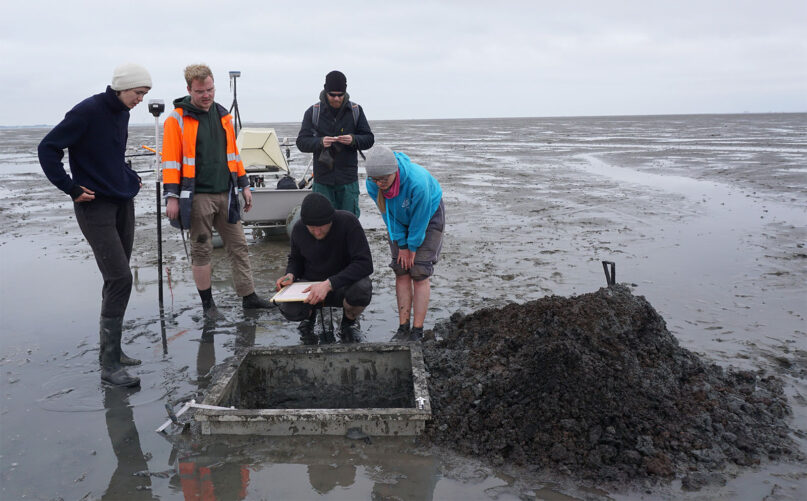(RNS) — Once upon a time, in the marshes of the Wadden Sea, which spans the western coasts of Denmark, Germany and parts of the Netherlands, a great center of trade and commerce arose. Known as Rungholt, the city grew rich off the the region’s abundant amber, salt and whales, and became an essential stop for North Sea traders.
However, as often follows money and power, its people grew vain and arrogant. When they first built dikes to keep the great sea at bay, they shouted back, “Defy us if you have the courage, Blanke Hans,” using a local nickname for a rough and wild sea, “White Hans.”
One Christmas morning in the 14th century, its townspeople decided to defy God himself, like the biblical builders of the Tower of Babel before them.
A group of young men tried to make a mockery of the church by tricking a priest into giving last rites to a pig disguised as a man. When the priest refused, they beat him senseless.
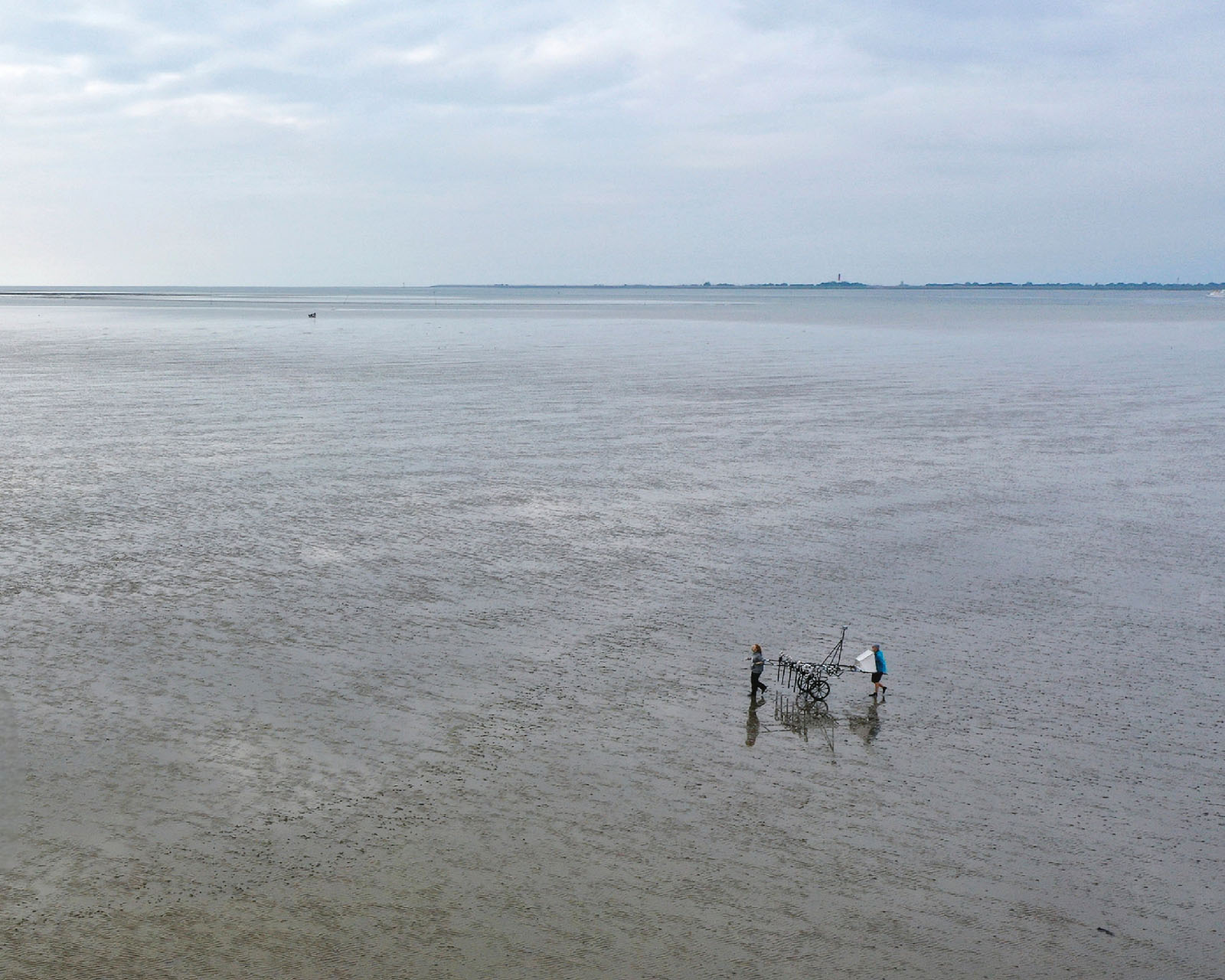
A lightweight measuring cart provides large-scale magnetic mapping of cultural traces hidden beneath the surface of today’s North Frisian Wadden Sea mudflats in northern Germany. Photo © Dirk Bienen-Scholt, Schleswig
Barely escaping with his life, the priest prayed that the men would be punished. God answered him with a vision — leave the island at once. Shortly thereafter, Blanke Hans found its courage. The winds roared, the waves raged, and Rungholt was wiped from the face of the earth. All its thousands of inhabitants died. It was a great drowning of men.
At least, that’s the legend, which proliferated in church sermons, chronicles and art across the region of North Frisia for six centuries. A parable about the vice of arrogance and the dangers of wealth and prosperity. As a mythic lost city, it would sometimes be called the Atlantis of the North Sea.
The reality of Rungholt is something different, a group of German archaeologists announced last month, after discovering what they believe to have been the central church of the medieval settlement.
Archaeologist Ruth Blankenfeldt, a member of the Rungholt Project, a collective of archaeologists who have been researching the area for years, pointed out that the remains indicate a structure large enough to have been the center of a parish and thus likely Rungholt.
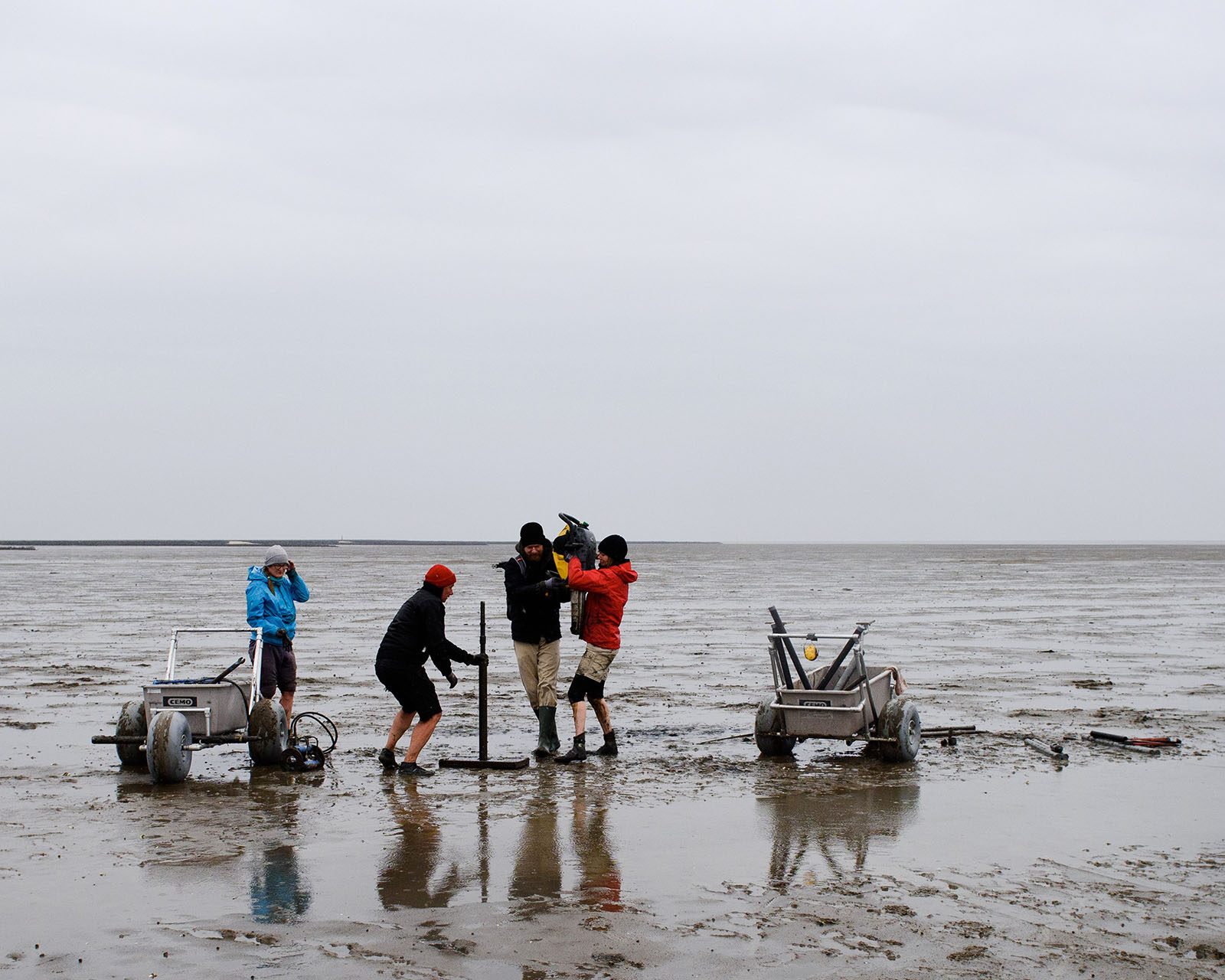
Sediment cores are taken to record settlement remains and reconstruct landscape development at selected sites on the tidal flats in northern Germany. Photo © Justus Lemm, Berlin
“The find thus joins the ranks of the large churches of North Frisia,” Bente Sven Majchczack, an archaeologist at Kiel University in Germany who also is a member of the Rungholt Project, said in a statement.
Still, the researchers cautioned against taking much of the legend as truth. For one, even calling Rungholt a city is a stretch.
“It’s not a city as you might think with streets and houses. It’s a dwelling mound between dikes in the outlands,” Ulf Ickerodt, another member of the Rungholt Project, told Religion News Service.
Dwelling mounds, or terps, provided living spaces above the height regularly flooded by changing tides. The earthworks, though common in the area, were no minor feat of engineering in their time.
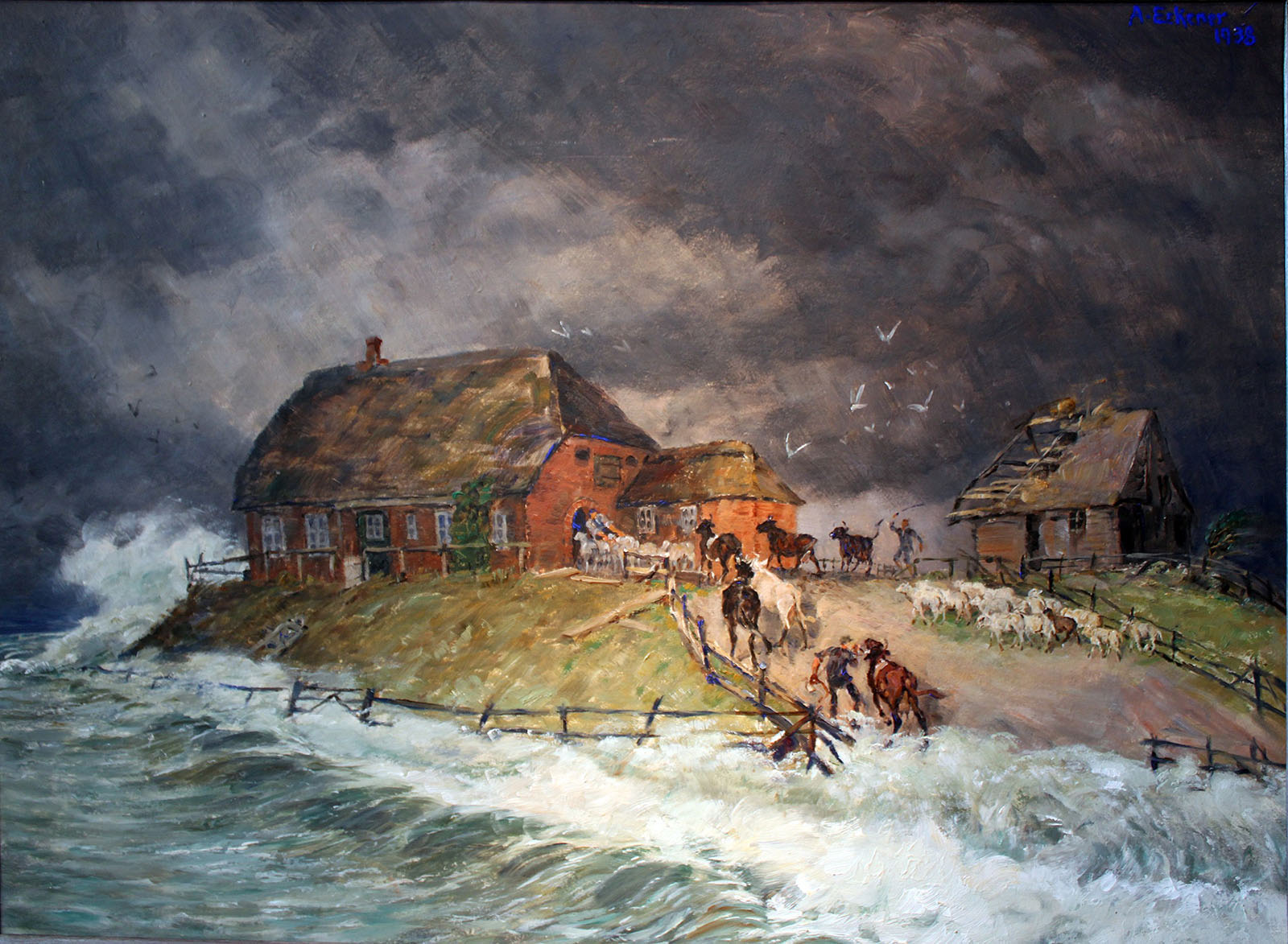
“Hallig during a storm tide” by Alexander Eckener. This 1906 painting is of a North Frisian Wadden Sea dwelling mound in a rough storm. Rungholt would have likely looked like a series of similar mounds. Image by Alexander Eckener/Wikipedia/Creative Commons
What is historical, however, is the calamity that destroyed the city: “the great drowning of men” — in Dutch, the Grote Mandrenke — a massive storm surge in 1362, which caused flooding around the North Sea and killed as many as 25,000 in what is today the United Kingdom, the Netherlands, Germany and Denmark.
“The Grote Mandrenke really had a huge impact, changing the areas that were settled into ones that were no longer inhabitable,” Ickerodt said. “The destruction of dike zones was quite common in the Wadden Sea area, but not in this amount.”
That’s something that hangs in the collective memory, and three centuries later, a Lutheran priest, Anton Heimrich, inscribed the story into his North Frisian Chronicle, the oldest extant record of the legend.
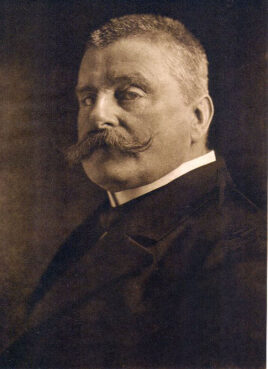
Detlev von Liliencron in 1905. Photo by Rudolf Dührkoop/Wikipedia/Creative Commons
“The Protestant priest uses Rungholt as a motif of transience or impermanence — meaning, ‘Be good. Otherwise, punishment will follow,’” Ickerodt explained. “This is a religious motif that was combined with collective knowledge that there was a village or city or some formation that had been destroyed.”
Another two centuries after Heimrich, the German poet Detlev von Liliencron further immortalized Rungholt’s tale in his ballad “Trutz, Blanke Hans.”
“Today I traveled over Rungholt, the city went under six hundred years ago,” begins the poem. “The waves are still beating wildly and indignantly, as when they destroyed the marshes.”
Liliencron’s telling casts the legend as a warning, less about man’s arrogance and defiance of God but that of nature, comparing Rungholt to Rome and painting Blanke Hans, i.e., the unpredictable nature of the seas, as a monster whose body stretches from “the shores of England” to “the sands of Brazil.”
By Liliencron’s time, Rungholt was seen as something primarily of myth, but changing tides in the Wadden Sea in the 1920s began to reveal evidence that there had been a medieval settlement there, and for more than a century archaeologists have tried to pin down the exact location of the legendary town.
“The search for the church of Rungholt was always a focus and often discussed,” Majchczack said, according to Vice. “A main question was always the character of Rungholt as such—was it a town, even a city or just a regular, but possibly important village in the marshes?”
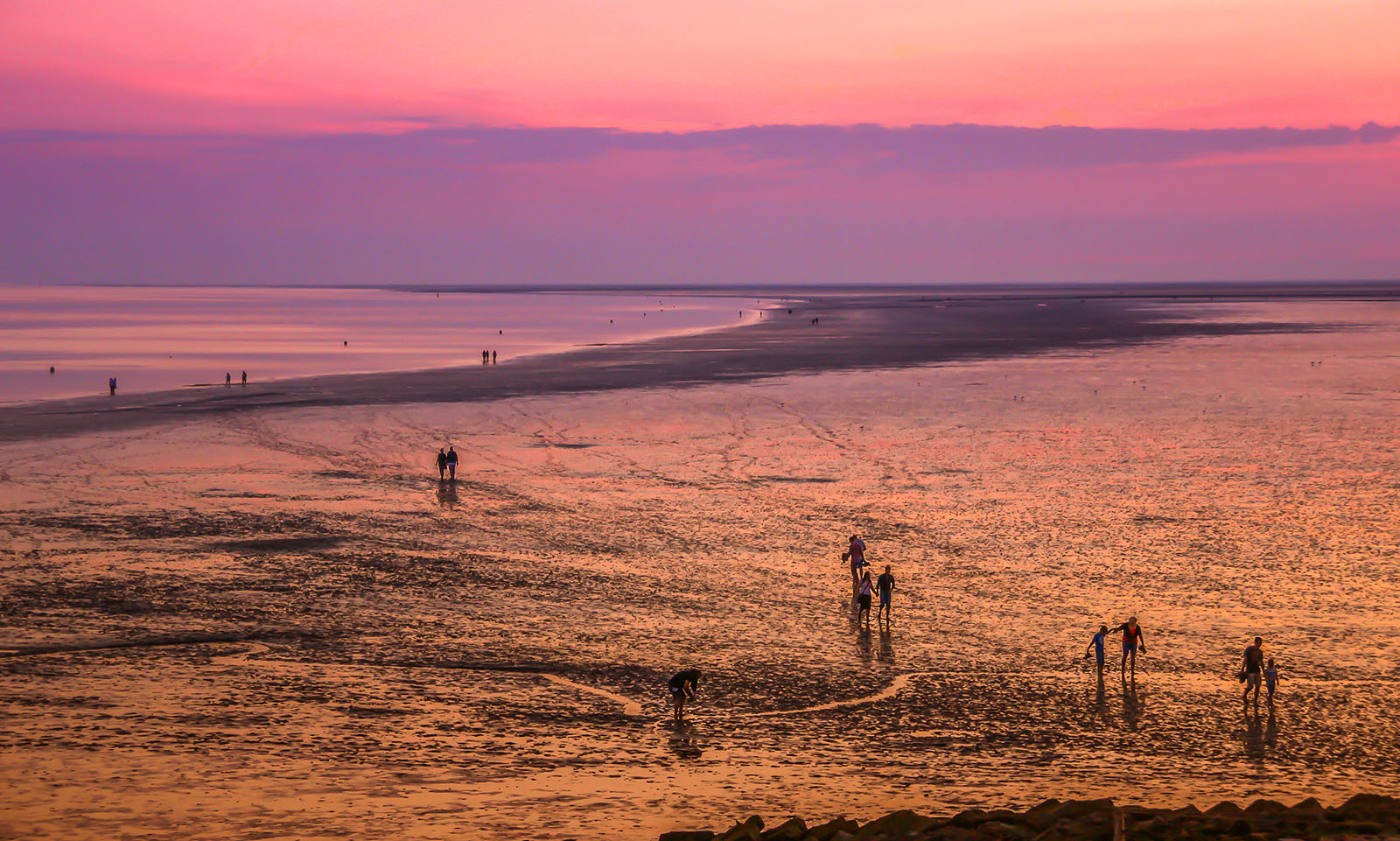
People explore the Wadden Sea mudflats at dusk in northern Germany during a low tide. Photo by Tom/Pixabay/Creative Commons
The descriptions of both Liliencron and Heimrich exaggerate Rungholt far beyond anything the archaeologists have found evidence for, but they illustrate how settlements and natural disasters can remain in the collective consciousness centuries on.
“Rungholt is a prominent example of the effects of massive human intervention in the northern German coastal region that continue to this day,” the archaeologists’ statement said.
In addition to the mound where the church was found, some 54 similar mounds remain yet to be investigated.
